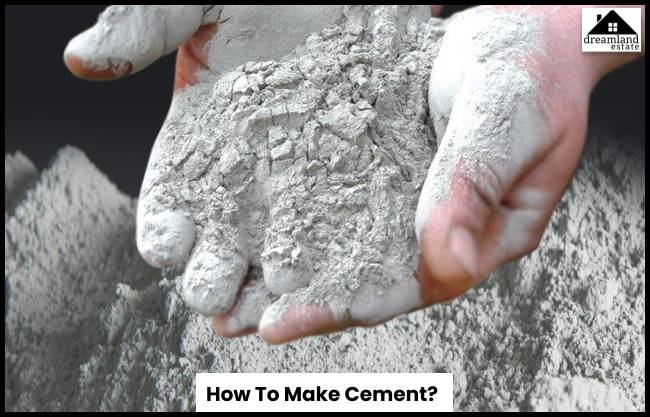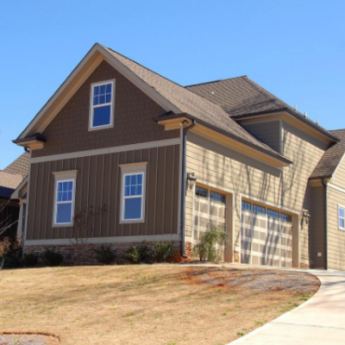Cement: The Ultimate Backbone Of The Modern Construction

What do you think the floor you are standing on gets made from? Ever wonder how people are making such a giant to be used to create some of the most vital structures worldwide?
This fine gray powder combines naturally available materials like limestone and clay. You can further mix it with water to create concrete – the substance used to create all homes and buildings.
After reading this article, you will understand the various types of cement, how they are made, and their multiple uses.
What Is Cement?

Cement is a gray powder. The process of making cement includes grinding together various solid substances. These solid substances are naturally available minerals like limestone, clay, etc.
Once you are done making it, its primary application is to create concrete structures. This includes the creation of houses, buildings, bridges, dams, and many more structural designs.
The primary use of this material lies in making concrete. You can create concrete substances by mixing cement with water and sand.
The process of mixing water and sand helps the cement to turn into a solid substance that can easily hold the other objects. The hardened and dried cement can easily hold objects due to its sturdiness.
This is the reason we consider cement one of the best materials when it comes to making structures.
The Current Global Market Of Cement
Cement is a crucial element in the construction industry. It acts as a binder between the surfaces of bricks, stones, and panels.
In recent times, there has been a rising population, increasing the overall demand for residential buildings. Thus, simultaneously, the demand for cement is also getting high.
The size of the global cement market was valued at USD 405.66 billion in the year 2023. Furthermore, this year, in 2024, the value is projected to be at 423.24 million. According to the forecasts, the industry will witness a projection of 592.38 by the year 2032.
The industry will also exhibit a CAGR of 4.3% during this forecasted period.
The History Of Making Cement
The history of cement making comprises the discovery of natural cement, the development of hydraulic cement, and, lastly, the creation of modern-day cement.
Natural Cement
Humans first used natural cement, which was created during the geologic changes on Earth. This is also known as Belite cement, which is also known as natural stone.
Natural cement is made from argillaceous limestone. During the making process, limestone calcines at a very high temperature, and then it is pulverized into a fine powder.
Hydraulic Cement
In 1824, a British stonemason, Joseph Aspdin, created the world’s first-ever hydraulic cement by heating a mixture of clay and limestone. He undertook this experiment on his own kitchen stove and turned it into a fine powder.
Furthermore, he named the cement Portland Cement as he collected the stone from the Isle of Portland.
Modern-day Cement
The manufacture of Portland cement further spread globally during the 20th century. By 2019, both China and India led the world cement manufacturing chart. Vietnam, the United States, and Egypt followed these two countries.
Types Of Cement

At present, there are 15 different kinds of cement that you can find. These kinds are:
Hydraulic
The first type is Hydraulic cement. This refers to cement made using hydration techniques like adding water to a mixture of limestone, clay, and gypsum. Once the mix hardens, you can refer to it as hydration.
After completing the hydration process, you can burn the mixture at a high temperature. This helps you to create fine gray dust.
Non – Hydraulic
Next comes the non-hydraulic cement. In the non-hydration process, you don’t harden the mixture through hydration. Instead, you use carbon dioxide. After that, you can add plaster and oxychloride to the mix. This can help to accelerate the hardening process.
Ordinary Portland Cement Or OPC
Thirdly, Portland cement uses clay, shale, limestone, chalk, and marble. You can hydrate to create a mix that is strongly meant for construction work. This is the most common type of cement available globally.
Portland Pozzolana Cement Or PPC
Next is PPC or Portland Pozzolana Cement. The process of creating PPC requires two things: pozzolanic materials and OPC. You just must mix these two elements very well.
The pozzolanic materials comprise:
- Fly ash,
- Volcanic ash, and
- Calcined or silica fumes.
You can use Portland Pozzolana Cement near water bodies. Why? Well, these cements are pretty water-resistant. You can also use it to create bridges over the water bodies and dams.
Rapid Hardening
For the rapid hardening process, you need to mix OPC with tri-calcium silicates (C3S). This creates a mixture that hardens very quickly. Then, you can use rapid construction to build pavements.
Quick Setting
Quick-setting cement uses OPC with clinker, aluminum sulfate, and other silica materials. The resulting mixture is a highly water-resistant mixture that dries up very quickly. Moreover, it gets used under waterbodies to make underwater structures.
Low Heat
Experimentation with OPC in adding less tricalcium illuminating (5%) and adding a higher percentage (46%) of declaiming silicates. When hydrated, it requires less heat compared to the other types. As a result, this is used in constructing large dams and chemical plants.
Sulfate Resisting
In this type, you must ensure that you are using a lower mixture of tricalcium illuminate. This makes the mix less susceptible to sulfates, which is quite harmful. The process requires many chimneys and water storage plants to prepare it.
Blast Furnace
This results from mixing OPC with blast furnace slag (65%). This is highly resistant to sulfates. Additionally, you can use the mixture for different kinds of underwater construction.
High Alumina
Aluminum ore is mixed with OPC during hydration to create this mix. This is highly resistant to extreme temperatures. Therefore, it gets used to building workshops (high temperatures) and freezer storage (shallow temperatures).
White Cement
You can make this by adding less iron along with manganese oxides to OPC. This is expensive and only works for construction projects. This is the reason why we use white cement to create various decorative set pieces, such as statues.
Colored Cement
Colored cement can have various colors. It is made by adding colors to OPC.
Air Entrained
During the hydration process of OPC, you must blow a gas bubble into it. This process helps to make it resistant to fire, frost, acids, and other harmful substances.
Once you are blowing the gas bubbles, the bubbles get trapped in the mixture, further entraining the product.
Expansive Mix
There are various raw materials like calcium sulfates, lime, tricalcium aluminates, and OPC clinkers you can add during hydration. This prevents shrinkage loss due to its expansion during the hydration process.
Hydrophobic
Lastly, you can make the hydrophobic mixture by mixing the oleic or stearic acid during storage time. This prevents the mixture from hydrating if water encounters it.
This layer of oil protects it from water and later breaks down when thoroughly mixed to start hydration and air entertainment.
How Cement Is Made?

Have you ever tried to learn the process of making cement? Or thought about How cement is made? If yes! Then you’ve come to the right section. Its elemental composition includes mixing limestone, chalk, clay, shale, marl, and slates.
Compounds of lime (CaO) get mixed with silica (SiO2) and alumina (Al2O3) to create this substance. Iron oxides (Fe2O3) and Bauxite or hydrated aluminum {Al(OH)3} also get used in smaller quantities. Gypsum and magnesium are often added depending on the type of composition created.
How Much Cement China Exports?
China exports approximately 65,000 tonnes of cement to the USA, which only accounts for 8% of its total exports by China.
Frequently Asked Questions (FAQs):
It combines eight materials – limestone, clay, marl, Bauxite, chalk, shale, sand, and iron ores. These get connected in a grinder that grinds them together and turns them into dust.
It is a powdery substance that you can make by grinding eight materials like clay, limestone, and more together. When mixed with sand and water, it forms concrete to create houses, buildings, and large structures like bridges and dams.
There are more than five types of cement, amounting to 15. They are:
Hydraulic
Non – Hydraulic
Ordinary Portland Cement (OPC)
Portland Pozzolana Cement(PPC)
Rapid Hardening
Quick Setting
Low Heat
Sulfate Resisting
Blast Furnace
High Alumina
White
Colored
Air Entraining
Expansive
Hydrophobic
Its chemical formula is – 4CaO·Al2O3·Fe2O3 = Calcium Alumino Ferrite.
In Conclusion,
Many people say that cement is one of humanity’s most valuable inventions. Before concrete was created, there were only mud houses and marble palaces. This material helped create most homes you see (even the ones you live in) and even developed bridges, dams, and other large solid structures.
If you read this article to learn more about cement, read similar articles!
Read Also:











Leave A Reply